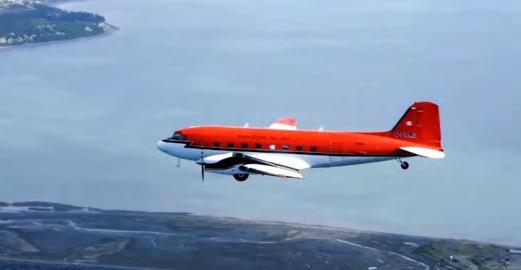
2 minute read
Coastal Zone Mapping & Imaging LIDAR
44+ THOUSAND DATA DOWNLOADS
SAVES $18 THOUSAND & 12 DAYS PER MILE OF SHORELINE COMPARED WITH TRADITIONAL SURVEY TECHNIQUES
Priority coastal areas for the Corps, such as surf zone and turbid waters, present challenges for current LIDAR sensors. Advances in processing bathymetric LIDAR signals and fusion of these signals with ancillary sensor data, such as hyperspectral imagery, have revealed opportunities for more progressive environmental applications of the data. The Coastal Zone Mapping and Imaging LIDAR (CZMIL) is an ongoing sensor development effort within the Corps’ National Coastal Mapping Program (NCMP). The program produces high-quality, high-resolution information products from airborne LIDAR bathymetry, topography and accompanying RedGreen-Blue and hyperspectral imagery data around the U.S. coasts on a recurring basis. New information products have been developed for the Corps and the Nation by further analyzing and fusing CZMIL’s LIDAR and imagery data streams. The current product suite includes: LIDAR point clouds, digital elevation models, laser reflectance images, air photo and hyperspectral image mosaics, a shoreline vector, and elevation shoreline and beach volume change. Products currently in development are beach and dune geomorphology metrics, dune vegetation and submerged aquatic vegetation metrics, coastal structure metrics, and water quality parameters.

PROBLEM: Regional coastal elevation data and imagery are required to characterize coastal change and manage sediment as a resource to support navigation, flood risk reduction and ecosystem restoration. The data are also needed to engineer entire coastlines for resilience to acute and long-term coastal hazards.

SOLUTION: The Joint Airborne LIDAR Bathymetry Technical Center of Expertise (JALBTCX) fielded the Coastal Zone Mapping and Imaging LIDAR (CZMIL) in 2012. This third-generation airborne coastal mapping and charting system, developed by Corps researchers, improves sensor performance in challenging environments, accelerates data delivery, and enables new and better information extraction from collected datasets.

IMPACT: JALBTCX uses CZMIL to collect nationally consistent, regional coastal data for the NCMP, for Corps and FEMA post-hurricane surveys, and for Naval Oceanographic Office Tactical Nautical Charting Surveys. Within the Corps, CZMIL data support regional sediment management, comprehensive coastal studies, smart planning, coastal asset management, and coastal storm modeling. Outside the Corps, CZMIL data are used to produce NOAA nautical charts, USGS coastal studies, and FEMA flood maps. State and local governments use CZMIL data for numerous coastal zone management applications.











